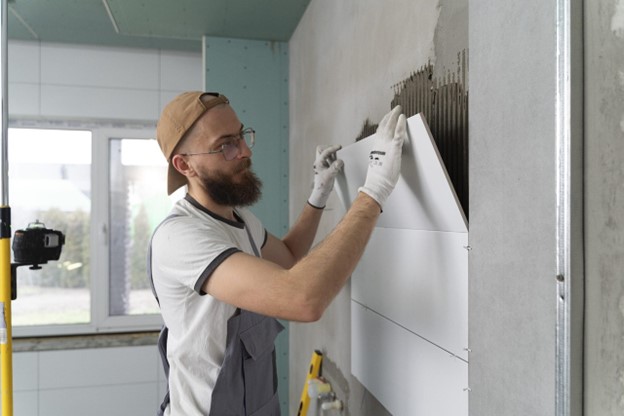Categories
REAL ESTATEPublished October 7, 2025
Effective Strategies for Removing Old Materials

The demolition phase of a remodel often feels like the toughest part—dust everywhere, piles of old materials, and that overwhelming feeling before the transformation even begins. But with the right plan and a few smart strategies, clearing out old flooring, cabinets, or fixtures doesn’t have to be chaotic. In fact, it can set the tone for a more efficient and cost-effective remodel.
Below are practical, easy-to-follow tips to make material removal cleaner, safer, and more organized.
1. Equip Yourself With the Right Tools
A successful tear-out starts with proper preparation. Invest in essentials like pry bars, heavy-duty utility knives, durable tarps, and clearly labeled bins to keep the process orderly and safe.
When it comes to larger debris—like old cabinetry, concrete, or heavy flooring—consider renting a trailer or dump trailer with hydraulic lifts. These make hauling debris faster and less physically demanding, cutting down on trips to the landfill and saving valuable time on-site.
2. Sort Materials as You Go
Demolition can get messy quickly. To stay ahead, separate materials as they come down—wood, metal, drywall, and fixtures each in their own bins or designated spaces.
Sorting immediately prevents recyclable materials from becoming contaminated and creates a safer work area by keeping sharp objects and tripping hazards out of the way. The cleaner your space, the more efficient your remodel will be.
3. Break It Down
Large items are easier to move—and dispose of—when broken into smaller sections. Remove cabinet doors before moving frames, cut drywall into manageable pieces, and divide countertops into lighter sections.
Not only does this make cleanup easier, but it also helps you fit more material into dumpsters or trailers, reducing hauling fees and trips. A little extra effort here saves a lot of hassle later.
4. Plan for Dumpster or Hauling Services
Don’t wait until debris is everywhere to think about disposal. Schedule dumpster rentals or hauling services in advance to keep the workspace clear and the project timeline on track.
A roll-off dumpster positioned on-site provides an easy drop-off point for debris, while pre-scheduled pickups ensure you’re not left with piles of waste slowing progress.
5. Recycle and Reuse When Possible
Many old materials still have plenty of life left in them. Metals like copper or aluminum can be sold to scrap yards, while gently used cabinets, light fixtures, or wood can be donated to local charities or resale stores.
You can even repurpose materials—such as using clean concrete or brick in outdoor landscaping. Recycling and reusing not only save money but also help reduce waste and support sustainability.
6. Work in Phases
Trying to clear out an entire home at once can quickly become overwhelming. Instead, align your removal process with your remodel schedule—finish one area, then move to the next.
For example, complete the kitchen demo before moving to flooring in other rooms. This phased approach keeps things manageable, maintains workflow, and ensures each space is ready for its upgrade right on time.
Final Thoughts
Clearing out old materials may not be the most glamorous part of remodeling, but it’s one of the most important. With the right tools, smart organization, and thoughtful planning, you can turn what feels like chaos into a smooth, efficient start to your renovation.
A cleaner, safer worksite not only saves you time and money—but also sets the stage for your home’s beautiful transformation.





